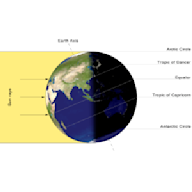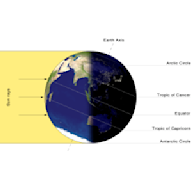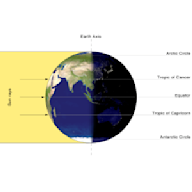Search results
Summer Solstice 2024
- Thursday, June 20
Jun 19, 2024 · June 20, 2024. On Thursday, everyone in the northern half of our planet will experience the summer solstice. It’ll be the longest day of the year north of the Equator, and it is the scientific ...
People also ask
When does the summer solstice start?
When does summer start in 2024?
What time is the summer solstice 2024?
When is the June solstice based on a calendar date?
Jun 17, 2024 · The June solstice occurs on Thursday, June 20, 2024, at 4:51 P.M. EDT. Read Next. This solstice marks the official beginning of summer in the Northern Hemisphere, occurring when Earth arrives at the point in its orbit where the North Pole is at its maximum tilt (about 23.5 degrees) toward the Sun, resulting in the longest day and shortest night ...
- Summer 2024 Date
- Alternative Summer Start Dates
- Days Get Shorter During Summer
- Shorter Days, But Rising Temperatures
- Summer Traditions and Folklore
- Summer Months
- How Long Is Summer?
According to the astronomical definition, the start of summer falls on the summer solstice. In the Northern Hemisphere, it's the June solstice; south of the equator, it is the solstice in December. What is a solstice?
Meteorologists use a different method of defining the first day of summer. And, in some countries, the beginning of the seasons is determined by average temperaturesrather than fixed dates or astronomical events. Meteorological and other seasons definitions
Astronomical summer begins at the summer solstice, which is the longest day of the year. This means days get shorter during summer—very slowly at first, but at ever-larger daily intervals as the September equinox approaches, heralding the start of fall. Locations closer to the poles experience larger differences in day length throughout the year, s...
Although daylight hours decrease during the summer months, temperatures continue to rise in most regions. This is because it takes time for Earth, particularly its oceans, to change temperature—an effect known as seasonal lag. (As a comparison, the planet Mars has seasons but no oceans, so there is almost no seasonal lag.).
The start of summer and the summer solstice are celebrated in cultures and religions around the world with various traditions, holidays, and festivals. Summer festivals: Midsummer, Epona, and a celebration of femininity
In the Northern Hemisphere, astronomical and meteorological summer runs from June to September. South of the equator, it starts in December and ends in March. Read more about the history and meaningof the summer months:
The Earth does not move at a constant speed in its elliptical orbit, so the seasons are not of equal length. On average, summer lasts for 93.6 days in the Northern Hemisphere and 89.0 daysin the Southern Hemisphere. Average season lengths: 1. March equinox to June solstice: 92.8 days 2. June solstice to September equinox: 93.6 days 3. September equ...
Jun 20, 2024 · The summer solstice, also known as the June solstice arrives June 20 at 4:51 p.m. EDT (2051 GMT), marking the longest day in the Northern Hemisphere. ... published 20 June 2024.
Solstice Local Time & Date. In Roanoke Rapids, North Carolina, USA: Thursday, June 20, 2024 at 4:50 pm EDT (Change location) This corresponds to Thursday, June 20, 2024 at 20:50 UTC. Sun rise/set and day length around this solstice. Solstice countdown. Local times for this solstice worldwide. Solstice Day and Night Map.
Jun 20, 2024 · Astronomical summer officially arrives in the Northern Hemisphere — amidst a heat wave — at 4:51 p.m. ET. It's the earliest start to the season since 1796, thanks to quirks in the calendar.
May 17, 2024 · In 2024, the summer solstice will occur at 4:50 p.m. EDT on June 20, according to timeanddate.com. Here's everything you need to know about the Northern Hemisphere's longest day of the year.





